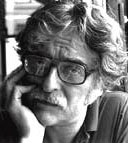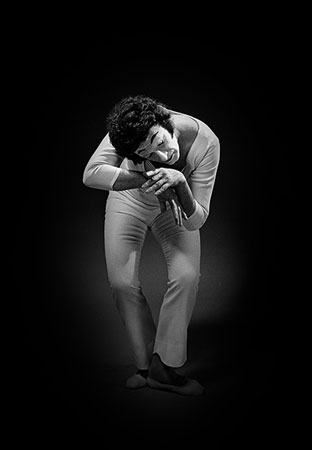 |
→ February 2005 Contents → Column
|
Nuts & Bolts
February 2005
|
 |
|
Just about the time this column appears on the Web, the 2005 AIPAD Photography Show will be held in New York. This is the big one. From Thursday, Feb. 10 to Sunday, Feb. 13, at the Midtown Hilton, 75 of the most important photographic galleries and private collectors will display and sell prints. In other words, you can spend four days looking at original prints from a broad spectrum of photographers - most of them in the exceptionally good category. There will also be three panel discussions. Most of the speakers will be curators. But four photographers will be speaking - Bruce Davidson, Susan Meiselas, Joel Meyerowitz and Gary Schneider - each marked by a generosity and intelligence far beyond the level found in most photographers. In other words, you'll actually get something out of what they say. A ticket for all four days costs $30, and you get a nice illustrated catalogue to take home. Compare that to the price of a workshop or photographic class and you'll see this is a lot of bang for your educational buck. If the AIPAD show is the Oscars, then Photo L.A. (February 20-23) is the Golden Globes. It will be interesting to see if the stars of Photo L.A. are the stars of AIPAD. Conceptual photography, photography which as much comes from the mind of the photographer as from what is in front of his camera, played much less of a part in Photo L.A. than it had in the recent past. This was good. We were spared large color prints of glass eyes embedded in cantaloupes and black-and-white prints made by people disrobing and throwing themselves across copy machines. Unfortunately, we were also spared the work of exceptionally good photographers like Jerry Uelsmann, Francesca Woodman and David Hockney. The show was dominated by what we think of as conventional photography - photojournalism, documentary, portraiture and landscape. And it was dominated by established names. This provides an insurance policy on the continuing worth of the image. But, sadly, it can also lead to pictures that aren't very much in themselves, selling at an inflated price because of who took it. There was the usual bannering of the "vintage" print and the "estate" print. But the prints themselves demonstrated that early and old prints could be good or bad. And new prints could be good or bad. I always admired Ralph Steiner who, at the end of his life, would sell a vintage print, but you also had to buy a more recent print from the same negative for $5.00. As he said, he had learned to print a little better over the years. I saw very few black-and-white inkjet prints. And none of them had a large sign on them saying, "This is a computer print." Nor did I see any black-and-white RC prints. Since inkjet and RC dominate the world of color printing, it always seems a little hypocritical to damn them in the world of black-and-white. But, for many galleries and collectors, there are many issues beyond the image itself that determine the print's worth. Every time I think this is unusual, I think of book collectors who prize first editions that may be so fragile that you would be ill advised to actually read them.
The snapshot teaches us all that what is in front of the camera is often far more important than who is behind it. Some people are better behind the camera than others. But the best work of almost everybody includes a gift from what was in front of the camera. Take a look at this picture of Marcel Marceau. Who is responsible for it? Well, for starters, Marcel Marceau. It was used as the shot behind the opening titles in a film on Marceau by John Barnes. So John was responsible. Certainly, the DP who lit the shot was responsible. And the electrician who killed the front lights before the backlights at the end of the shot was responsible (or maybe fate was responsible for the order in which the lights were killed). And I pushed the button, so, I'm responsible. If you think this is a good picture, I'm glad to hog the credit for it. But that's not how it happened. And maybe that's what makes us different from painters and sculptors.
I like to think of that before I go to photographic exhibitions.
© Bill Pierce
Contributing Writer
|
|
Back to February 2005 Contents
|
|
 Perhaps, because of that, I am always thrilled and amused by the booth that is selling old snapshots and other photos that were never meant to be exhibited as art. Found:Photo was certainly one of the most crowded booths at the L.A. show. Every shot credited to anonymous. He/she was certified good when a few years back the Metropolitan had a major show of his/her work. When everybody else seems to think that the key to success in the art world is very large prints, it's good to see anonymous still has the courage to exhibit the small, intimate print.
Perhaps, because of that, I am always thrilled and amused by the booth that is selling old snapshots and other photos that were never meant to be exhibited as art. Found:Photo was certainly one of the most crowded booths at the L.A. show. Every shot credited to anonymous. He/she was certified good when a few years back the Metropolitan had a major show of his/her work. When everybody else seems to think that the key to success in the art world is very large prints, it's good to see anonymous still has the courage to exhibit the small, intimate print.